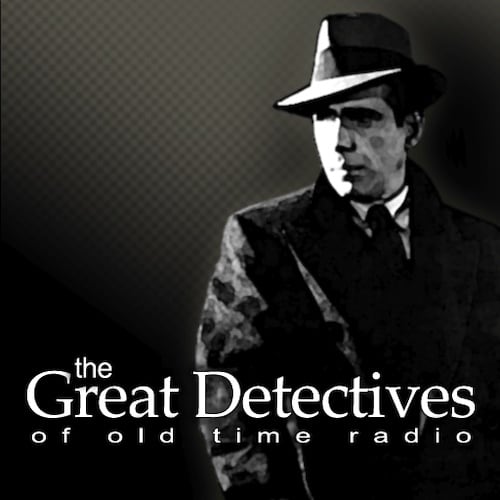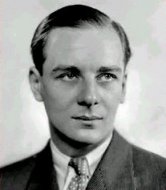After an obligatory two year hiatus, BBC’s Sherlock returned with the third series of 90 minute Sherlock movies where we find out what happened at the end of Series 2 in The Reichenbach Fall where viewers seemed to witness Sherlock Holmes committing suicide in order to save the lives of his friends. I expressed in great detail my issues both with The Reichenback Fall and with the first and last episodes of the series. So how did the third series of 90 minute episodes go?
“The Empty Hearst”: Sherlock Holmes has his completely expected return from the dead in this episode, after Watson apparently stood across the street and watched him commit suicide in the last Series 2 episode which was based on “The Final Problem.” Of course, the “The Empty Hearst” has the solution to how Holmes avoided death as well as two other theories that were propounded by in-world theorists. While some doubt is left as to whether Holmes is telling the truth, the theory propounded is as ludicrous as that provided by the theorists and just makes me hate the Series 2 finale even more.
The good news is that “The Empty Hearst” doesn’t focus on the absurdity of the way this played out, leaving the explanation for the final twenty minutes of the show. This episode’s main focus is Sherlock’s return to Baker street and his relationship to Watson. Here, I have to give respect to the writers for giving Watson realistic reactions to this turn of events, which leads to Watson assaulting Sherlock not once but four different times.
Sherlock shows some character development. He remains socially clueless, particularly as he expected Watson to be ready to pick up right where he left off and had no conception that the people in his life would at any point move on with him gone. He also professes his love to a woman, only to find she too has moved on and gotten engaged..
The main mystery to occur is kind of left hanging for most of the episode and is resolved in plenty of time, but there’s a hint that events in this episode were only part of a far greater threat with the focus in this episode being on the relationship and establishing the character. I also appreciated how Doyle stories worked into this episode. A sidebar case that Holmes quickly solves in this episode is based on, “The Case of Identity” while the main mystery borrows from the non-Holmes Doyle mystery, “The Lost Special.”
Overall, I found the episode fun, which wasn’t something I said a lot about the Series 2 episodes.
Grade: A-
“The Sign of Three”: It’s the wedding day of John Watson and Mary and Sherlock is the best man and he has to give a speech and boy is out of his element as he begins a meandering speech that’s at time offensive to many members of the audience and at times awkward.
This isn’t the whole episode as the wedding speech serves as a framing device to discuss a fantastic locked room case involving a guardsman who was nearly stabbed to death, Sherlock attempting a stag night out that has Holmes’ best calculations of how to avoid getting drunk go horribly wrong, and a case of many women who are dating a ghost. Both cases are not completely solved but they’ll have to be or they’ll be at murder at Watson’s funeral.
The human element continues to be big this series and that’s a mixed blessing. On one hand, the fondness of the two main characters for each other and the real buddy nature of the relationship. On the other hand, this episode does tend to meander a bit, and I feel like the story got lost somewhere for about half an hour.
In addition, some of the moments didn’t work. Watson and Holmes getting drunk by mistake was supposed to be cute. The way it was portrayed was just stupid.
But on the awesome side of the ledger, I liked how they managed to have a physical portrayal of Holmes doing an online chat and then we got taken actually inside Holmes’ head to see how he was reasoning. It was a great moment and a good solution to the case. Far from perfect, but I still enjoyed it.
Grade: B
“His Last Vow”: While the title of this story is inspired by the short story, “His Last Bow,” the basis for the plot was “The Adventure Charles Augustus Milverton.” In this version, foreign newspaper baron Charles A. Magnussen holds blackmail over the heads of nearly every one of any importance in the Western World. They try to make him even more disgusting by having him lick a woman he was blackmailing and urinating Sherlock Holmes’ fireplace (subtlety thy name isn’t Stephen Moffat.)
Sherlock manages to finagle his way into Milverton’s estate only to find someone very close to him and Watson about to kill Magnussen.
Beyond that, I can’t go into much more without spoiling it and I don’t want to spoil it. The program features some great developments in the relationship between these three characters: John, Mary, and Sherlock. In the first episode of the series, Watson was told that Sherlock was a great man and might even become a good one, and you have a sense that he’s growing towards that end. The reveal of where Magnussen’s files are hidden is a bit of a surprise as well.
Of course, there are a few bumps in the road. Sherlock toys with a woman and proposes to her to get into Magnussen’s apartment. This was something that was extrapolated from Doyle’s original story. And then there’s the end of the episode where he once again crosses a line as he did (or seemed to do) at the end of Series 2. However, I found his action while wrong, to be quite believable. I think the Sherlock Holmes of the nineteenth century probably would have done the same thing facing similar circumstances. In the 21st Century Holmes’ case, his actions were to keep the vow he made to protect John, Mary, and their child at the end of the previous episode thus the name of the episode.
Some critics have pointed out that this story lacks a satisfying whodunit feel to it. Well, so does Doyle’s original story, so I can’t fault the writers too much on how this ended up. In the end, this episode was a powerful story of evil, honor, forgiveness, and love
Grade: A-
Overall:
I was delighted by Series 1 of Sherlock, I was repulsed and irritated by much of Series 2. Series 3, on the other hand, really surprised me.
I never expected the emotional depth of this series. After Robert Downey Jr’s portrayal of Holmes as a selfish egotist who made Watson’s wedding and marriage difficult, I never expected Cumberbach’s Holmes that would be intelligent enough to extend his absolute dedication to John Watson to his new bride. (As an aside I have to wonder whether the Downey pictures, the CBS series, and the BBC series don’t play off one another to some degree.)
This is a series where the cases were rarely as flashy, but there was some great substance in each episode. The production team topped themselves in making Sherlock’s though processes themselves look great.
Despite my complaints about Milverton’s over the top disgustingness, this series actually was less full of blood, guts, and shock value than the previous two series.
At times, the episodes were padded and they could lose focus, but overall I’m fairly happy with this series and looking forward to Series 4.
Rating: 4.25 out of 5.0
f you enjoyed this post, you can have new posts about Detective stories and the golden age of radio and television delivered automatically to your Kindle.

 Sherlock Holmes returns from the dead to solve a locked room murder.
Sherlock Holmes returns from the dead to solve a locked room murder.